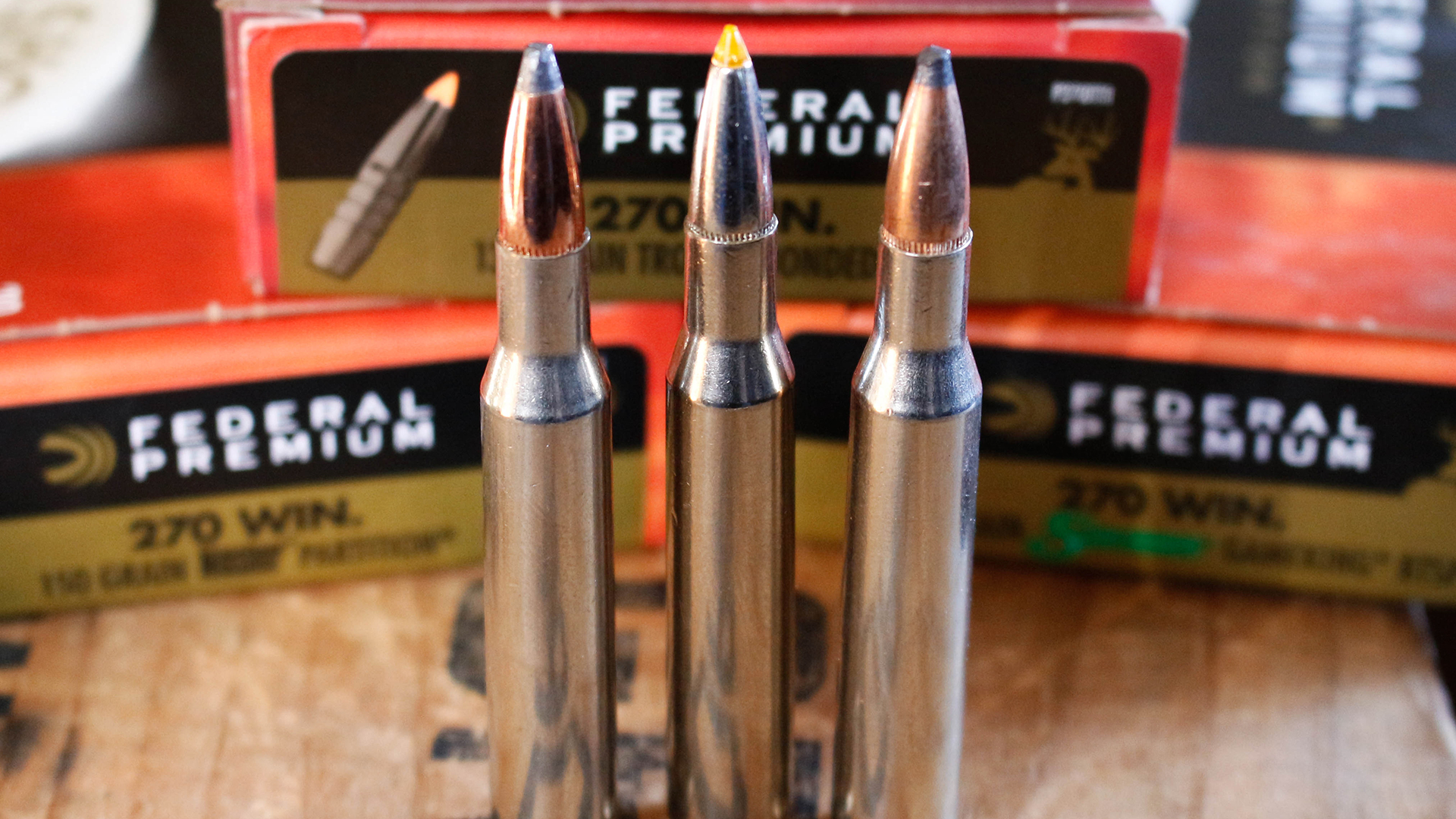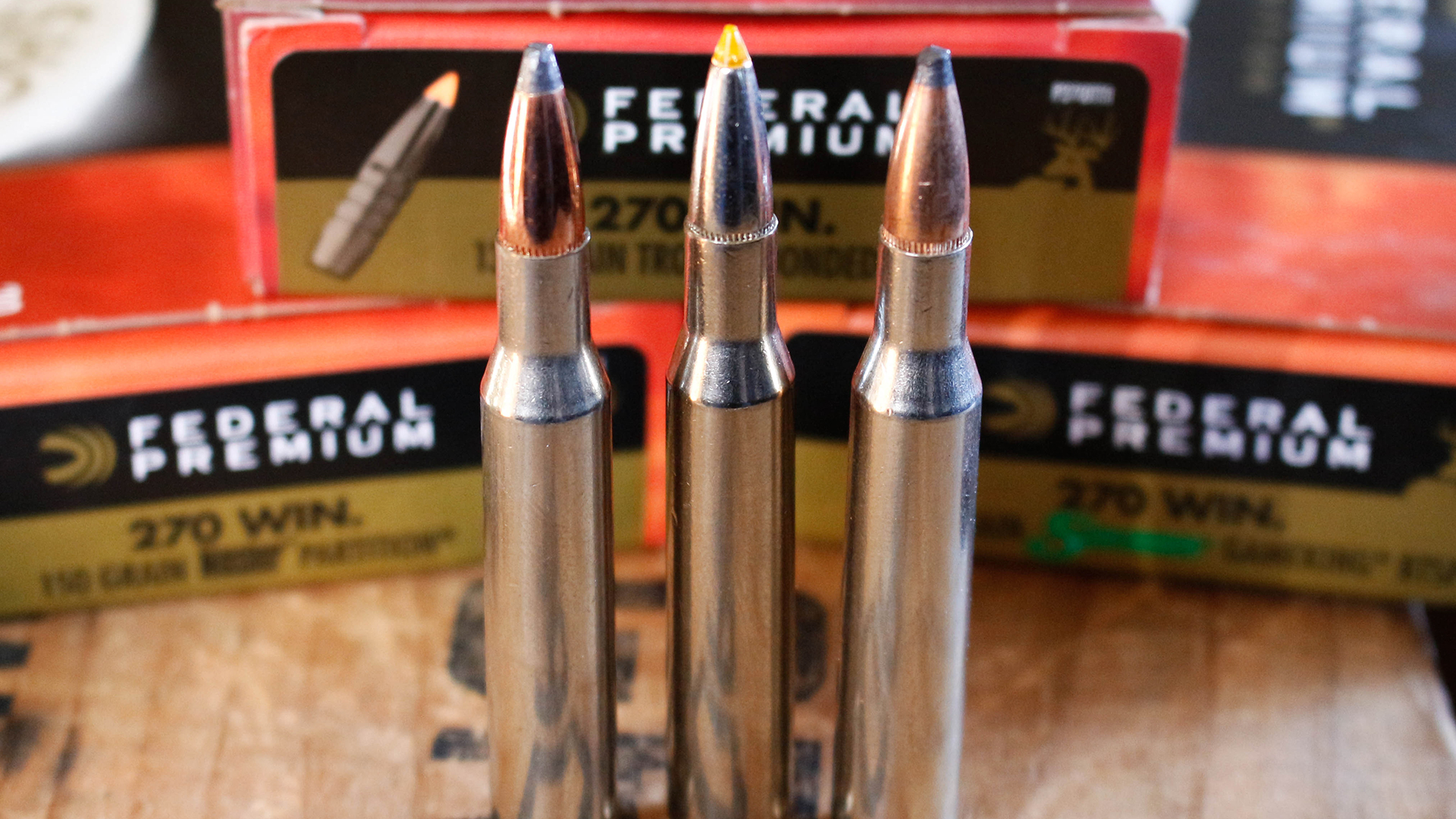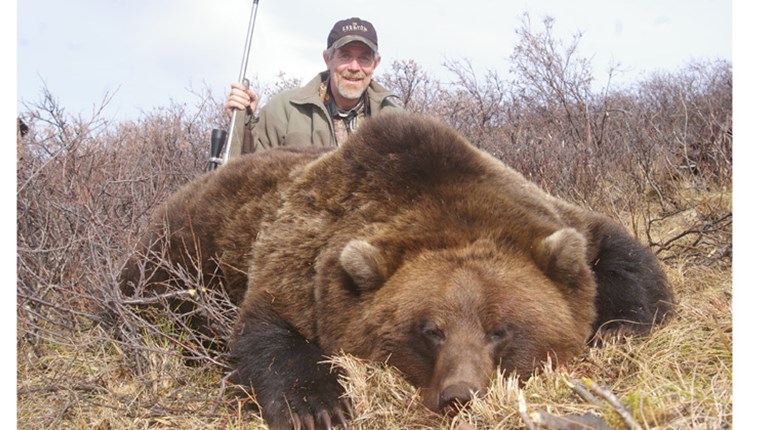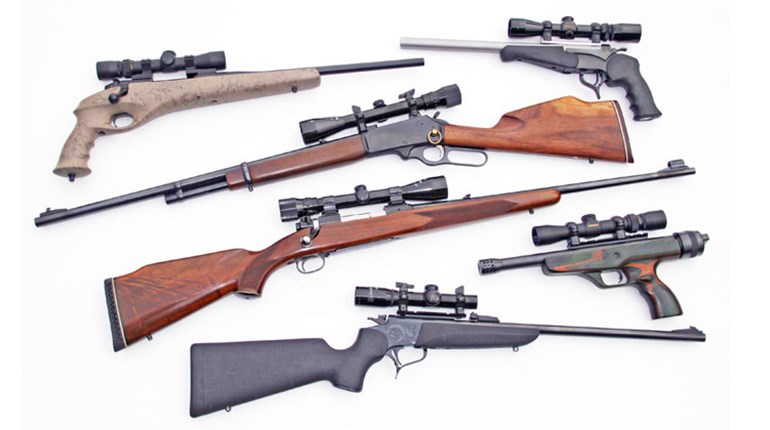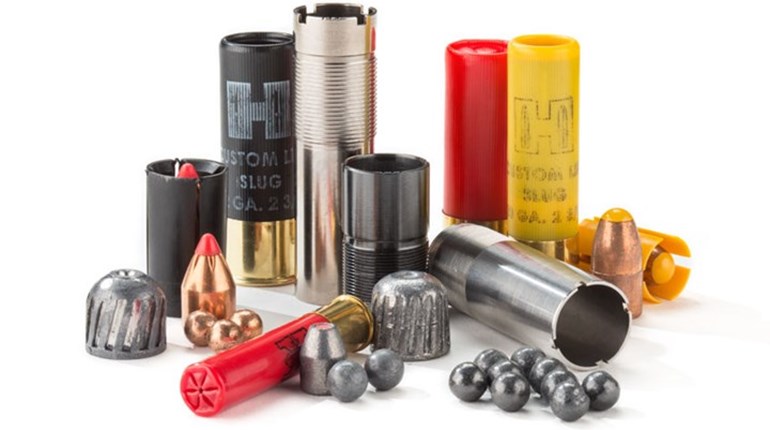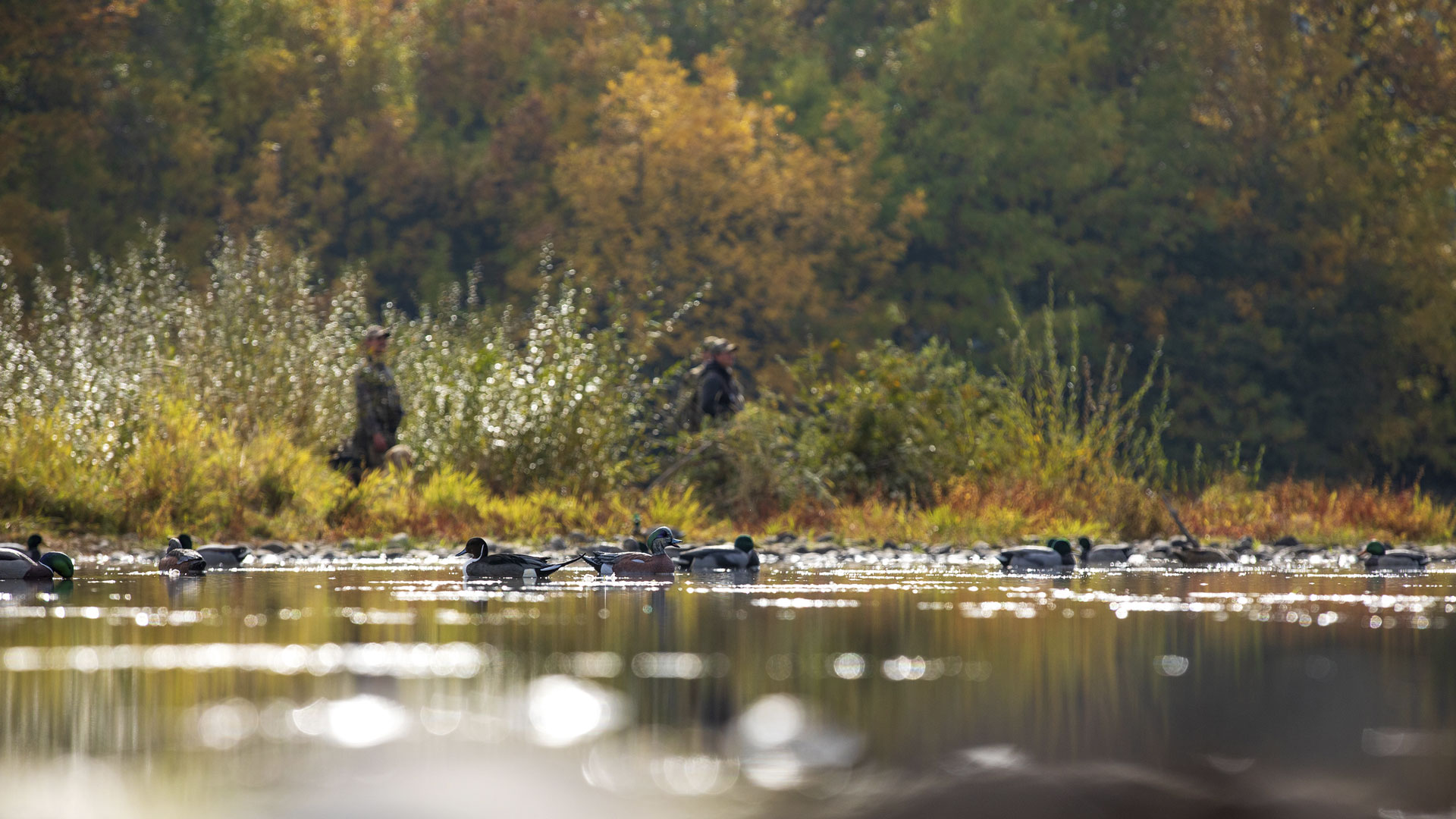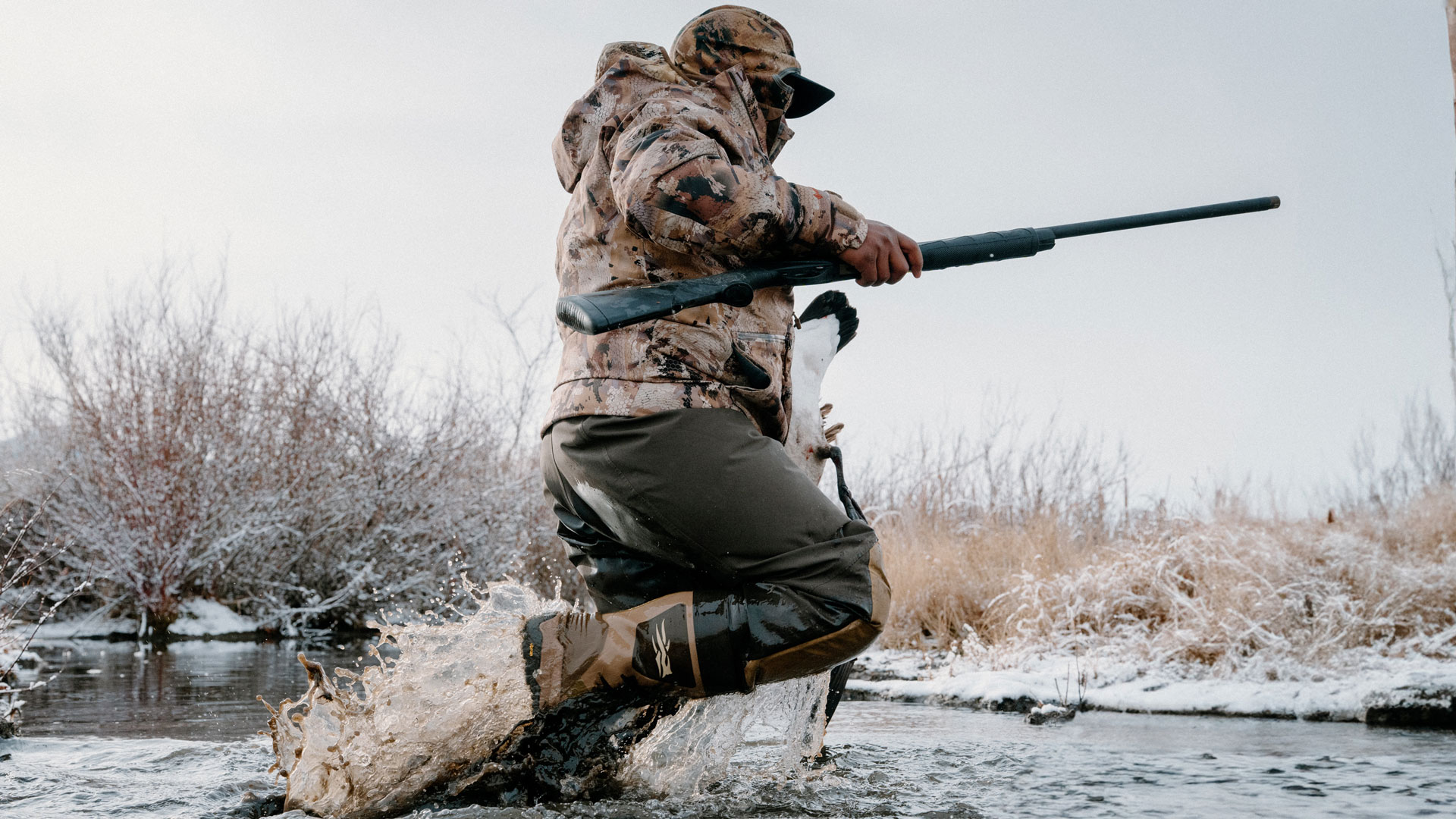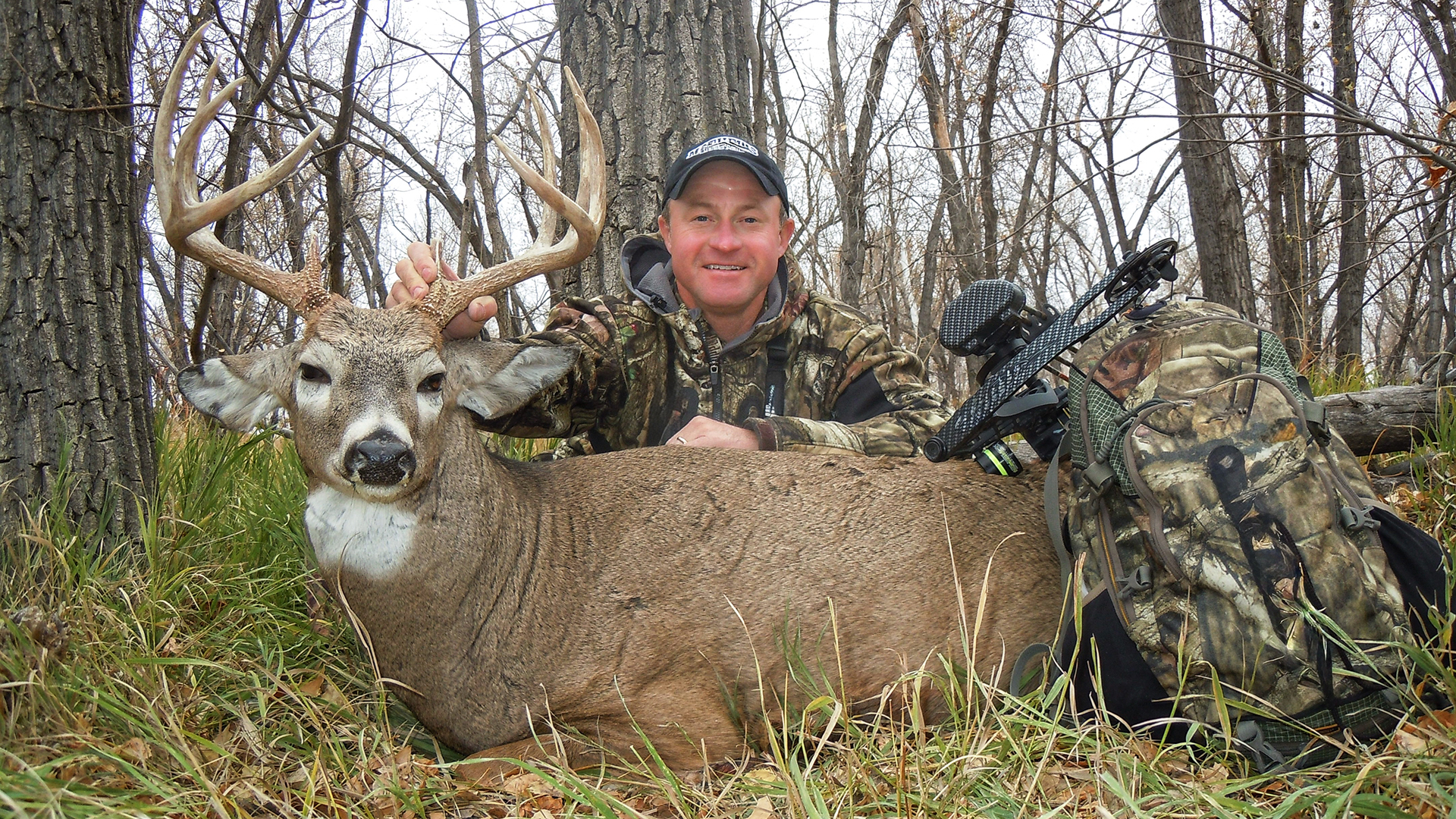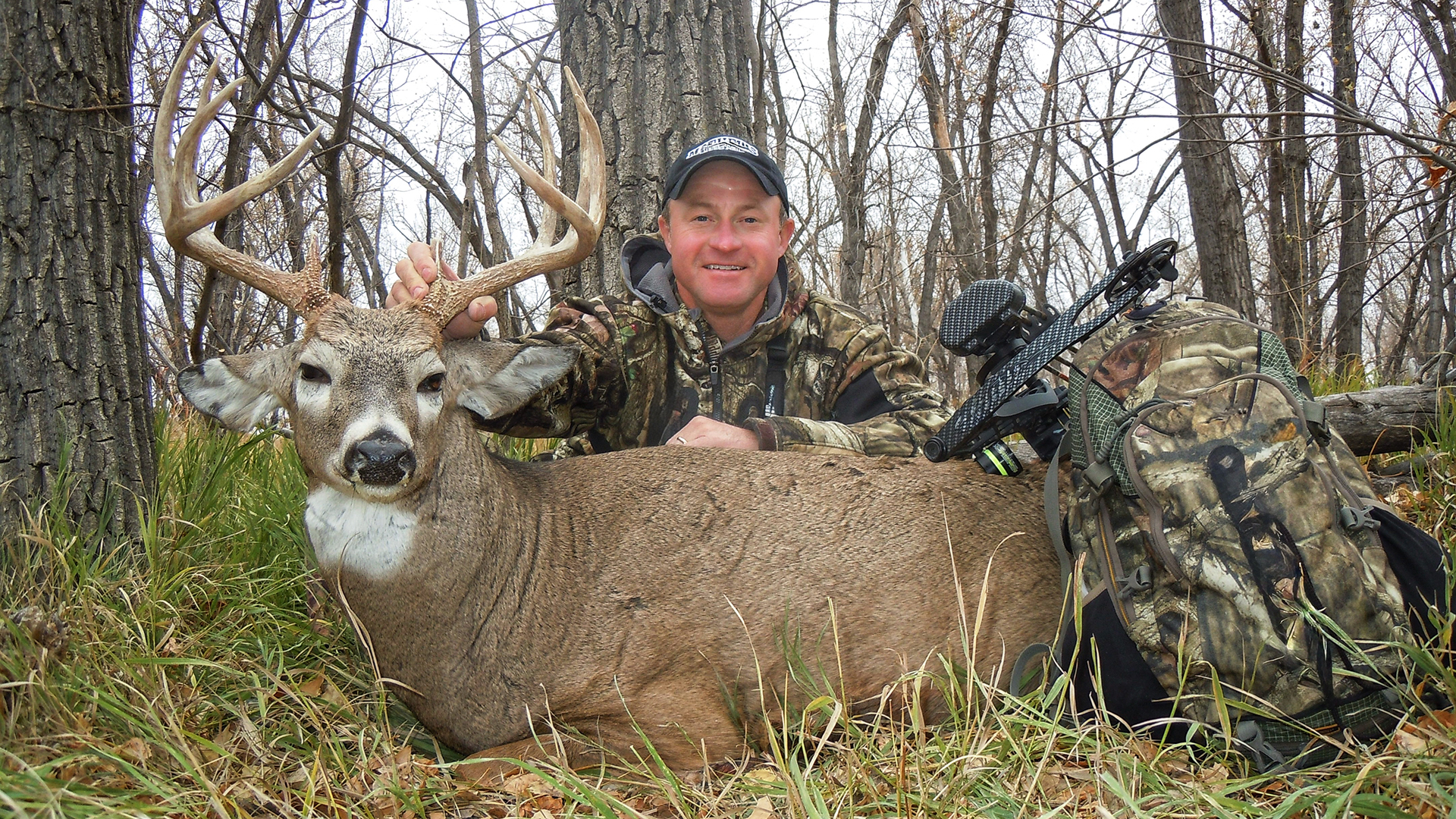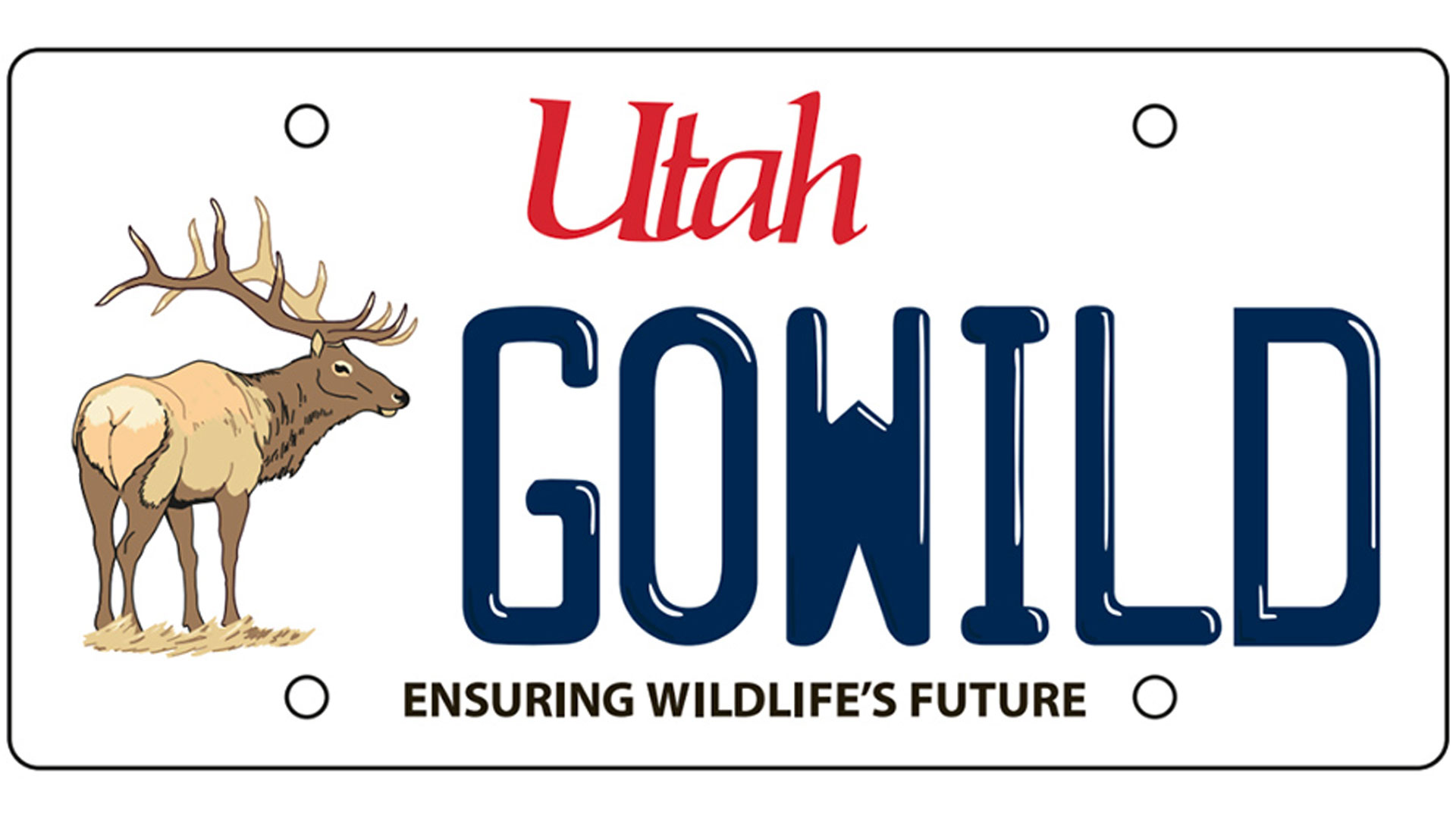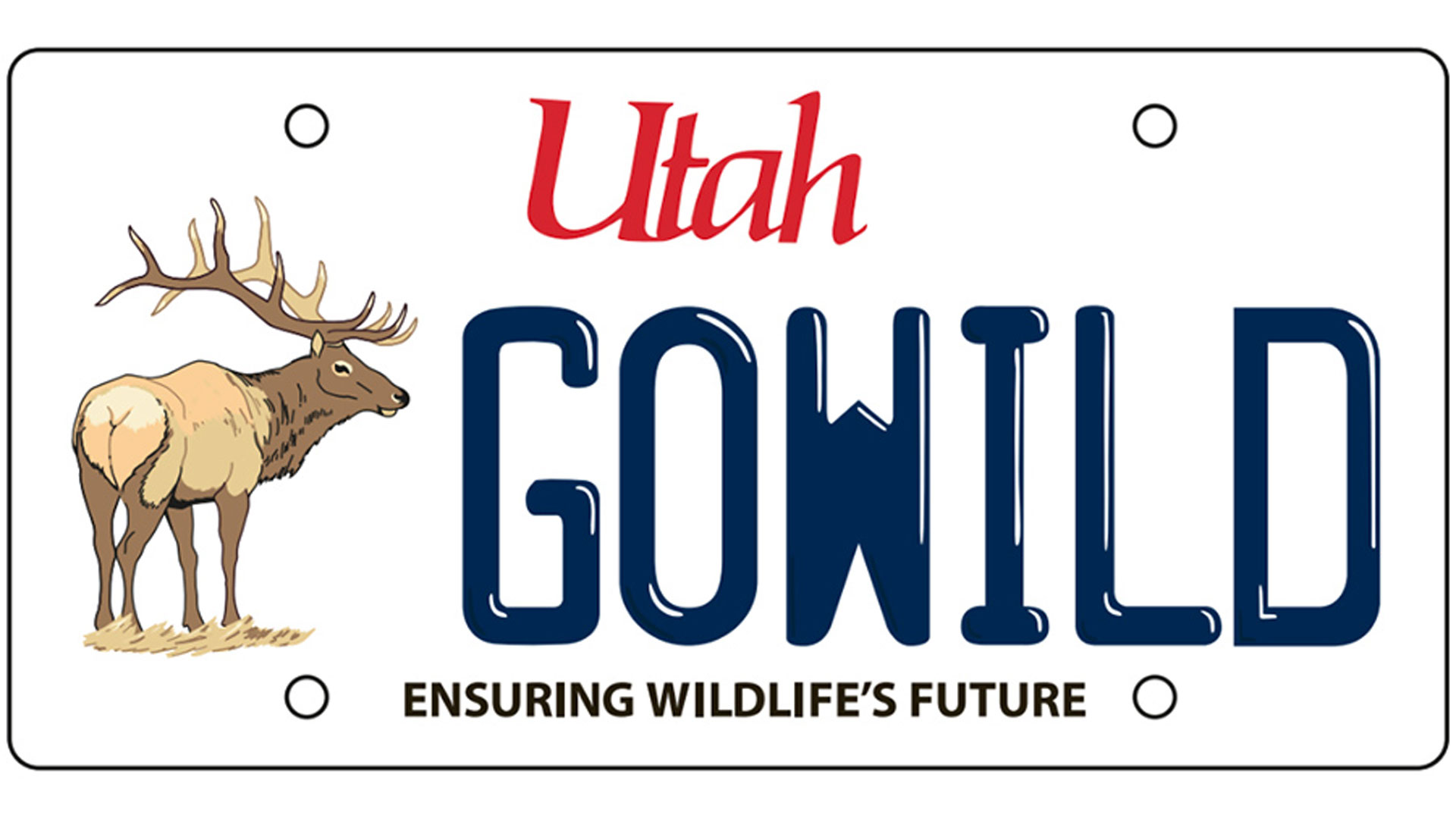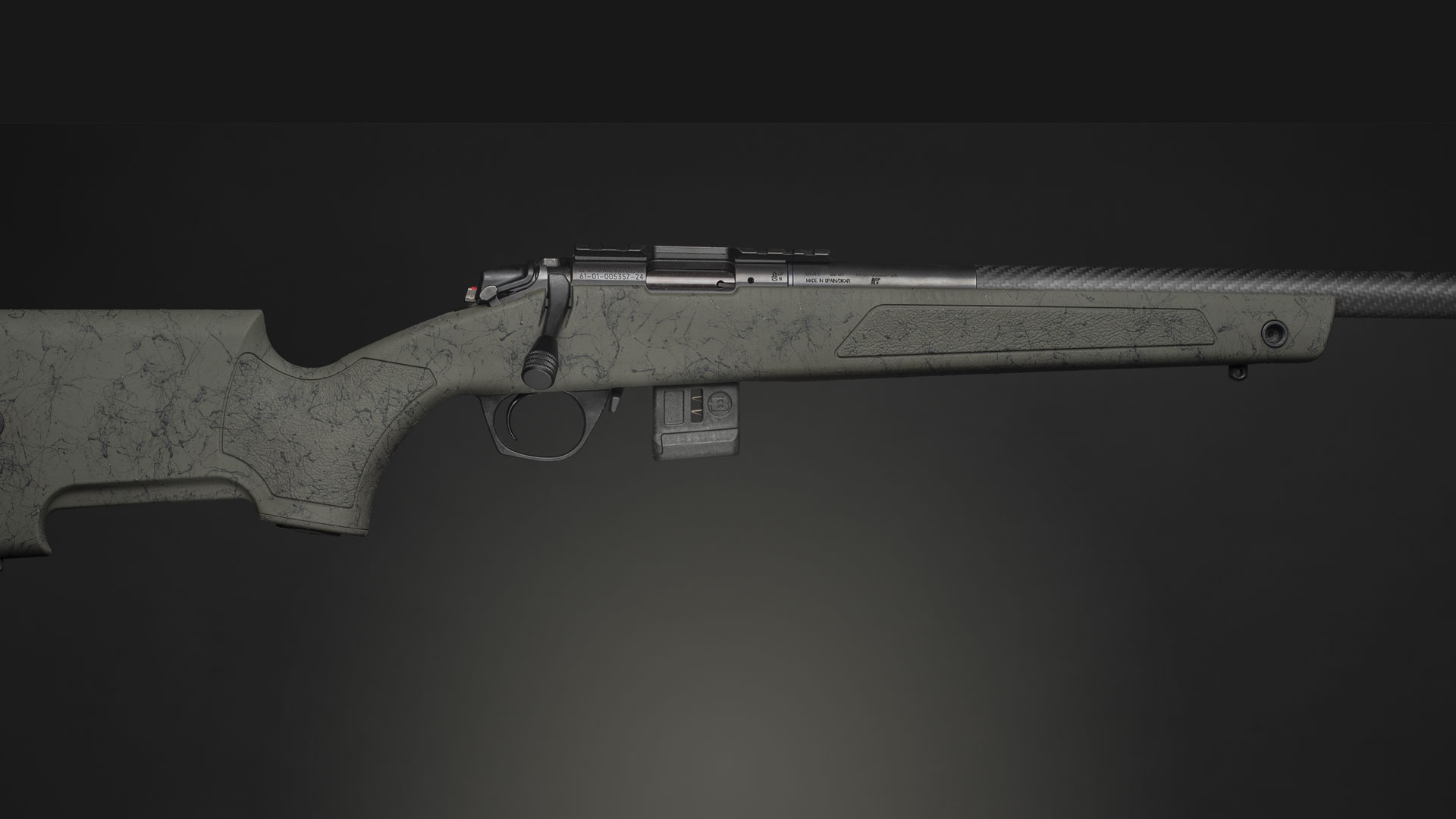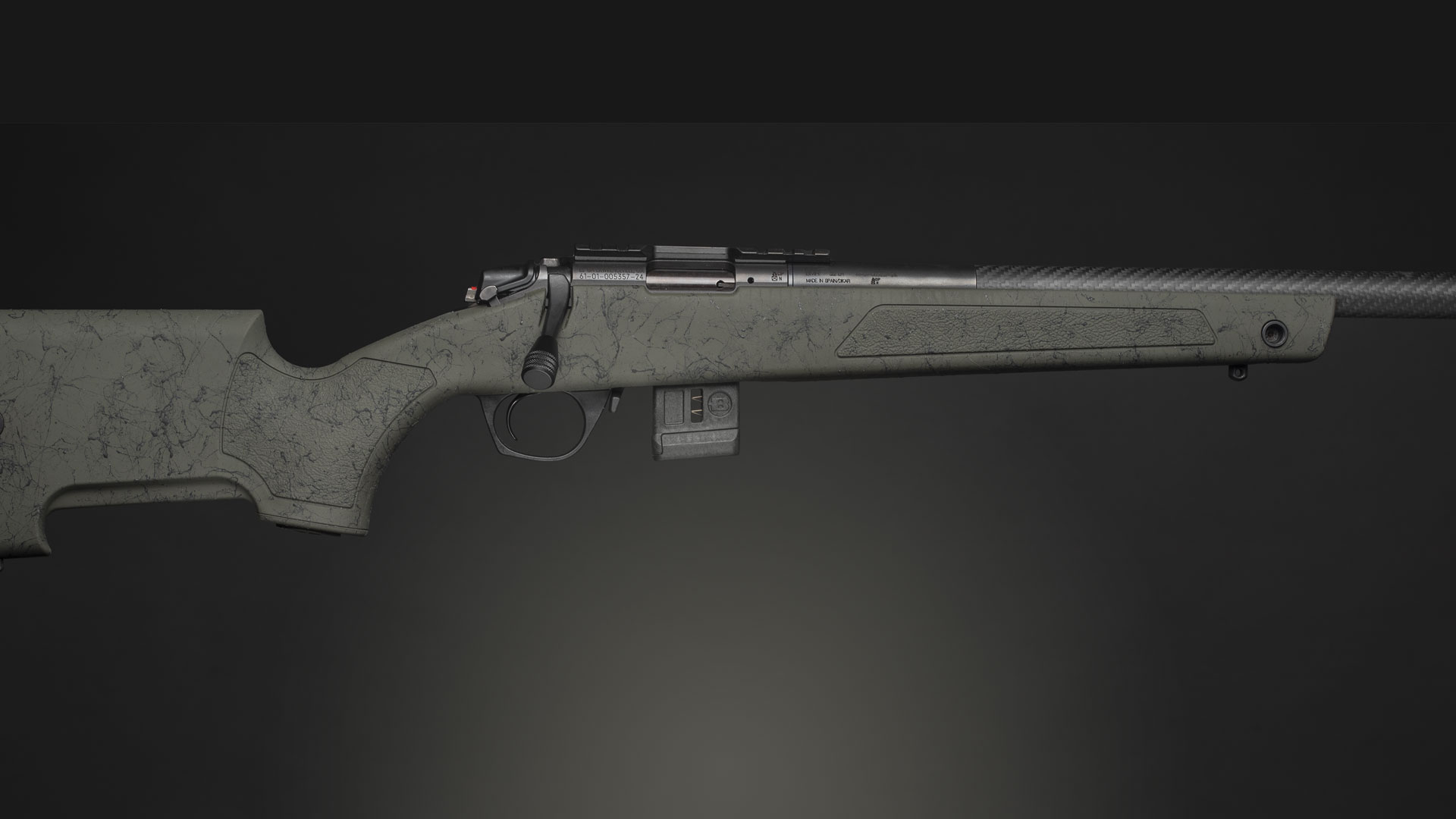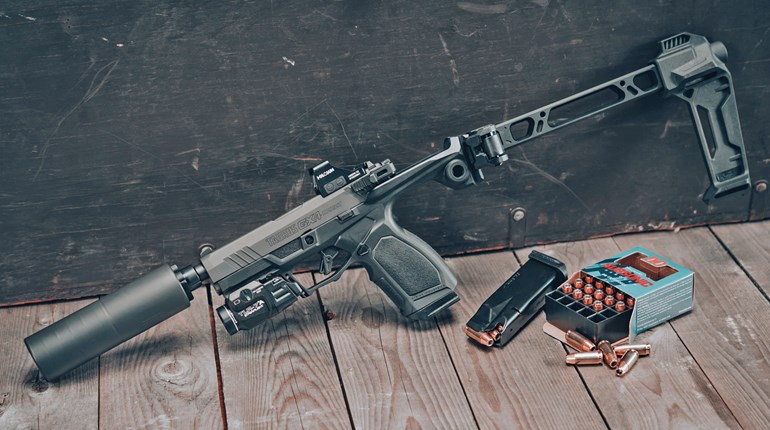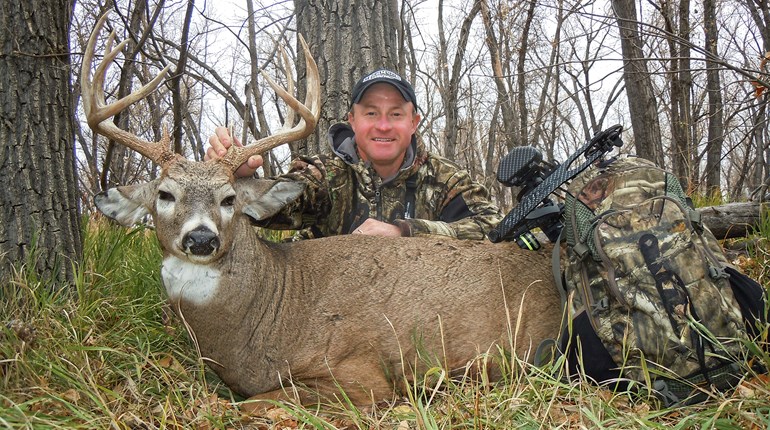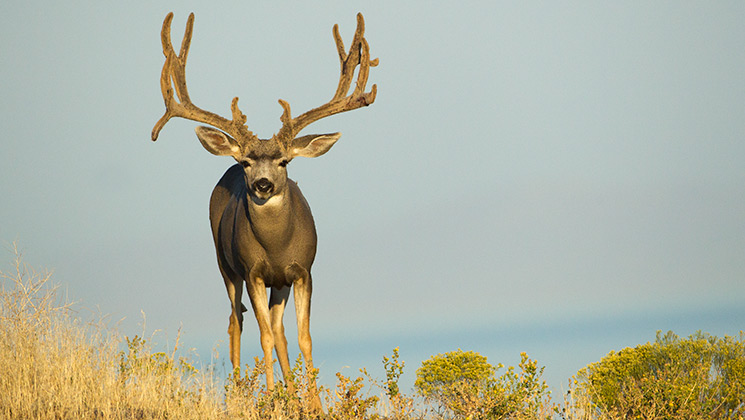
Mark knew the buck, knew where he ate, drank, slept, walked—and when. He knew because the massive whitetail lived in the woods and fields behind his house, right on the edge of town, surrounded by farms, acclimated to tractors, road traffic, barking dogs and children playing in back yards. He knew because he monitored the buck with a half-dozen trail cameras operating 24/7 year-round. Mark knew exactly when and how he would hunt this buck.
He had no clue how to hunt mule deer.
Mule deer, those elusive, majestic antlered monarchs of the wild, Wild West, lure many a dedicated whitetail hunter far from home. And that presents challenges. How do you find them? How do you pattern them? How do you plan your mule deer hunt?
Whitetails are our favorite big-game animal because they’re widespread, abundant and accommodating. Mule deer are mysterious, distant, aloof and unpredictable. Here today, gone tomorrow.
Or so most whitetail hunters think.
Wrong.
There are nine mule deer living in my neighborhood in a large city in Idaho. There are bigger ones living in Estes Park, Colo., and Jackson Hole, Wyo., and Missoula, Mont., and probably Rapid City, S.D. Big mule deer can be just as urban as big whitetails. But you probably aren’t going to hunt those. You venture west for an adventure, not to hunt in someone’s back yard.
Wilderness mule deer. That’s what you’re after. Or at least really, really rural mule deer. Bucks that live and grow those towering racks far from the madding crowd, out on the vast plains and deep in the mountain fastness where Native Americans and mountain men used to hunt them. Those are the bucks that light your campfire, spark your motor and pour gas on your flames. Wild deer. Real deer. Elusive, hard-to-find and that’s why they’re so darn big and alluring deer.
Those. How do you find those? That’s what we want to know. How do you scout and pattern a wild mule deer buck that might not be seen by 10 humans in a year, maybe not ever?
Take a Vacation
Grab the spouse and kids, load up the camper with tents, fishing rods and backpacks, and head west. Don’t forget your binocular and spotting scope. Especially your spotting scope. Because while you’re “vacationing” this summer, you’re going to be looking for that mule deer of your wildest dreams.
Half the challenge in tagging a great mule buck is knowing the country, who owns it and how you can access it. Summer is the ideal time to sort this out. Start by selecting a state, game management unit and general area within it after consulting state fish and game websites, magazine articles, websites, books and veteran hunters. Figure out where big bucks are routinely taken. Figure out your odds for drawing a tag there. Hit Google maps and look at the terrain. Can you handle it?
When you’ve narrowed things down, consider consulting one of those mapping apps like onXmaps that show public land boundaries and private ownership. This can save you miles of struggle and days of frustration.
With your preliminary research done, get out there and meet the ground you’re going to walk. This is invaluable for your psyche. Too many first-timers hit the Big West only to freak out, tuck tail and head back to the farm. Grasslands and sagebrush flats that stretch to the horizon can make you feel naked and vulnerable. Mountains that crumple and plunge and tower for miles can make you feel small. So enter slowly, cautiously, with plenty of defenses like water, food and shelter. If mountain men could crisscross this country with little more than a flintlock and curiosity, you can do it with all the modern tools at your disposal.
Use It or Lose It
But you have to use those tools. Don’t just buy and unwrap that tent next October with rain falling and snow threatening. Erect it in your back yard again and again. Fill that stove and lantern. Use and reuse. Then go camping and use again until all your hunting/camping tools feel like old friends, friends that will help you not just survive, but thrive in the great mule deer wilds you’ll soon be enjoying.
Next take all that gear out west. While you’re vacationing in your hunting zone, drive as much as you can or need to, stopping frequently to assess the view, to study it and get a feel for the country. Camp beside the truck the first night or two. You’ll feel safer and grow more confident.
Venture off the road for an overnight cautiously. Don’t go for a 15-mile hike that gains 5,000 feet. Just getting a few miles off the roads is sufficient. Later you can extend your explorations. Get familiar with the Western world. Get comfortable and you’ll be able to hunt with confidence come fall.
Glass and Glass Again
The West if vast and you couldn’t walk enough of it in a week to find more than a handful of bucks. So let your eyes do the walking. Find an observation point—either low looking across at good habitat or high looking down on it. Dawn and dusk are prime times, of course. Summering mule deer bucks will be alone or more likely in bachelor bands just like whitetails. In the mountain forests they’ll most likely be at or above tree line because it’s wetter and cooler up there. Plant life is young and tender. As summer dries the woods and the heat climbs, so do the deer. They’ll often hang just under the snowfields.
Big bucks will also summer in the sage flats and lowlands. They don’t go high just for the cooler temperatures. They go mainly for the forage, and if they have access to dependable water and grass, forbs and brush, they don’t care what the elevation is. Just think about all those huge monarchs taken from the Sonoran desert every year. They didn’t grow that big by hiking up to a summer snowfield to eat. But they did need water, so key on that.
If there are any crop fields around, key on them, too. In the West crops are usually irrigated, and that means both water and dependable nutrition. Alfalfa and grass fields cut for hay are magnets because they provide new, fresh greenery after each trimming. Some alfalfa fields are cut three times a season.
You can start glassing with a binocular, but don’t save the spotting scope for use only after you’ve located deer. At 20X to 60X you can scan landscapes 4 to as many as 10 miles away under good atmospheric conditions and spot mule deer. Out to 4 miles you can even get a pretty good assessment of antler size. Be patient and glass, glass, glass.
It’s Candid Camera Time
Don’t assume you won’t have time to work with trail cameras. You can set them up the first day you arrive on a scouting trip or the hunt itself. Set up at waterholes or fence crossings into green fields. Even trails in mountain forests can produce. Checking the cameras could be major work in some spots, but there will be plenty of places where you can drive close. The latest smart cameras that send cell phone pictures could work. Surprisingly, many remote areas get cell service, so check it out. You might be able to leave a camera out for a month or more. Of course, you risk the usual theft issues, but in many parts of the West human traffic is low to non-existent, especially if you have permission on private land. Isolated water tanks in ranch country could be perfect spots for trail cameras. Just be prepared to see lots and lots of cattle.

Homebodies
Inexperienced mule deer hunters might be shocked to learn that these bucks are as much homebodies as any whitetails. Seems hard to believe when you watch a spooked buck run across 4 miles of pool-table pasture, but most mule deer are faithful to a fairly small summer range and winter range. The problem comes during the transition period. Sometime in October rising testosterone levels will inspire bachelor bucks to disband, wander and sometimes move miles and miles to rutting areas they haven’t seen since the previous November.
Here’s likely what happens: A buck fawn learns its first summer range, rut range and winter range based on where its mother leads it. When Mom kicks out Junior, the poor thing wanders until accepted by an old boys’ club. With this crowd he learns a new summer range, and it’s usually small. A bachelor band with good water and browse in close proximity might live on 100 acres, wandering no more than a few hundred yards for weeks on end. Predictable! But as fall approaches and antlers harden, the old boys’ club breaks up. Massive old bucks disappear overnight.
Where do they go? Back to their traditional rutting grounds, perhaps the one Mom used, perhaps the one they stumbled on in their second year. They remember those places. When testosterone levels rise to the breaking point, they return to these areas. After the rut they will return to a traditional wintering ground, probably the one Mom showed them when they were young. In spring they’ll move back to the haunts of the old boys’ club. Mule deer are homebodies, but they’re seasonal homebodies.
This explains why so many mule deer hunters lose their summer bucks in late October. If you can hunt before mid-October, the bucks you scouted in summer should still be there. Even if you can’t scout until a day before your hunt, you can count on any older bucks you locate to remain in that general area. Quit searching and buckle down to serious hunting. Before early to mid-October, don’t run thither and yon looking for wandering bucks—because they aren’t wandering. After mid-October, they begin the fall shuffle.
Patterning Rut Bucks
To find rutting bucks, find a rutting band of does. Unlike whitetails, doe mule deer live in tight family groups of six to 14. Spike and forkhorn bucks often hang with them, but mature bucks rarely do—until the rut kicks in. Instead of attaching himself to one estrus doe the way a whitetail buck does, a mule deer buck attaches himself to a family of does. Why scour the countryside when a bit of patience will bring you four to a dozen conquests in one band? So old bucks return to areas where they’ve found does in past years or they’ll wander from their summer grounds until they stumble onto a handsome family of females. To ingratiate himself with these girls, a buck will court slowly and cautiously, awaiting his chances. He might spend the entire rut with that one cluster of does.
Younger bucks, like teenage boys, are more likely to be cruising. They dance around one bunch of does, maybe get chased off by the herd buck. So hike around to find another coterie of females. In high buck density areas, an oversupply of mature bucks forces them to do the same. This is why you sometimes spot tall, wide racks ghosting above the sage or through the pines in late November. Competition is fierce, and it’s easier or perhaps safer to hunt for a new band of does than challenge a herd master for control.
Of course, this searching and challenging shuffles the cards. I once watched a splendid 180-class buck with a band of happy does get pushed out in a matter of seconds by a massive non-typical that sauntered down the mountain. One clash of the antlers and the 180-inch buck was out of there. Made me wonder what kind of buck made the non-typical move off the mountain!
If you find a small buck with a group of does in November, he’s either one of the biggest around or he’ll soon be driven out. Timing is critical here. Early on, before the first doe reaches estrus, young bucks are claiming their spots. The old veterans know better than to waste their time. They might not show up to claim the prize until the day before the real action begins. I wouldn’t shoot an average
4x4 from a harem in early November. Chances are bigger bucks haven’t yet crawled out of the woodwork to displace him. Rut time varies slightly region by region, but generally by Nov. 15 it’s heating up or kicking in. Around Thanksgiving it’s usually in full swing. Consult with local biologists for more specific times. You can more confidently interpret local buck potential and behavior if you know such details.
Hunting Pressure Mess
Hunting pressure means all bets could be off. A herd buck usually runs with and stays with a spooked band of does, but a wary one could veer off for deep shelter. All the running and mixing can disrupt herd structure. A big buck happily ensconced with an isolated cluster of does could find himself challenged by a bigger buck fleeing into the area due to hunting pressure elsewhere. Once one apple cart is upset, it spills into others. Your best bet under these conditions is to already have a good idea of the size and quality of bucks in the area, and that’s where summer scouting can pay off. In general, areas with heavy hunting pressure rarely support older, mature deer, so why waste time looking for one? Limited-entry units famous for producing big, old bucks should be worth the wait. The big boys might not show up until the rut is well underway or until snow pushes them down from the high country.
Consistency
The more you scout and the more often you scout, season after season, the more you learn about mule deer in any area. But few of us have time for that. The next best thing is to study mule deer behavior. Learn all you can about what they do, why, where and when they do it. Pick the brains of ranchers, foresters, biologists and serious mule deer hunters in the country you hunt. Yes, you can get lucky on your first mule deer hunt, but luck favors the prepared.



